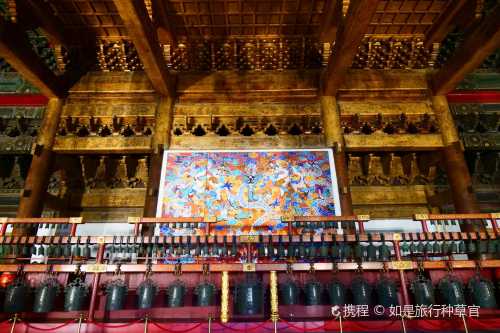App
Customer Support
NZD
Find Bookings
Popular Trip Moments
Huangsi Dajie! Authentic Chaoshan flavors that will transport you straight to the heart of Chaoshan! | A coffee shop hidden in a century-old Taoist temple | Beijing Huairou Cozy Tea Time | Scenic area of Baiquan Mountain | Embark on a Spring Journey | Admire Pear Blossoms in Beijing, the Capital | Stay at the Pullman Xishuangbanna Resort in the Tropical Rainforest | Bei Wu Park: Free Admission! Cycling, Fishing, and Kid-Friendly Fun, a Hidden Gem in West Beijing | This Beijing hotel turned my Republican-era dreams into reality! | Cherry blossoms at Yuyuan Park Beijing | The Seine of Beijing: Liangma River International Waterfront | Beauty of Beijing's Old Summer Palace | Hall of Prayer for Good Harvests: Where Beijing’s History Reaches the Heavens | 🏯✨ Why the Forbidden City is a Solo Traveler’s Must-See (Plus Its Mind-Blowing Secrets!) ✨🏮 | A Remote Village | Experience Yunnan in Beijing: Dong He Ren Jia (Dongdan Branch) | A Solo Art Exhibition Full of Feminine Power | This hotel was such a pleasant surprise for my first time in Beijing! | Beijing's Top Spring Outings: Forbidden City Pear Blossom Rain × Ten-Mile Peach Blossom Valley | [The Ultimate Beijing Suburban Getaway] A Designer Siheyuan Just for Your Weekend! | The Forbidden City: A Timeless Masterpiece of Chinese Imperial Architecture | If You Haven't Been to Shougang Park, You Haven't Been to Beijing: 9 Photo Spots | I'll definitely come back to this hotel next time. The value for money is amazing! | Exploring China's Taoist Temples: A Spiritual and Architectural Journey | Beijing Chaoyang Olympic Forest Park|Top-ranking flower sea in spring | Wow! This hotel is the epitome of understated luxury! | Very interesting architecture. I've always wanted a photo with it | The architecture is really inspiring | Nice antique market in the district of Panjiayuan | The Palace Museum - Treasure Furniture Gallery | A Day Full of Energy at Beijing Olympic Park
Popular Travel Types
Recommended Attractions at Popular Destinations
Bangkok attraction near me | Manila attraction near me | Tokyo attraction near me | Taipei attraction near me | Hong Kong attraction near me | Seoul attraction near me | Kuala Lumpur attraction near me | Los Angeles attraction near me | Shanghai attraction near me | New York attraction near me | Shenzhen attraction near me | Osaka attraction near me | Singapore attraction near me | London attraction near me | Guangzhou attraction near me | San Francisco attraction near me | Beijing attraction near me | Macau attraction near me | Bali attraction near me | Jakarta attraction near me | Paris attraction near me | Ho Chi Minh City attraction near me | Istanbul attraction near me | Phuket attraction near me | Chicago attraction near me | Seattle attraction near me | Toronto attraction near me | Orlando attraction near me | Cebu attraction near me | Chiang Mai attraction near me
Popular Attractions
Zhangjiajie Grand Canyon | Akihabara Electric Town | Auckland War Memorial Museum | Auckland Harbour Bridge | S.E.A. Aquarium | Pak Ou Caves | Yu Garden | Tian'Anmen Gate Tower | Universal Beijing Resort | Shanghai Tower | Water Cube | Suzhou Museum | The West Lake | Jinsha Site Museum | Well Agro | Undavalli Caves | Ho Chi Minh City Book Street | Espiye Lunapark | Cabaret de Licques | 内牧公園 お花見広場 | Allegrippis Trail System | Aqua Action | Laxmi-Narayan Temple | Chapelle des Templiers ou du Temple | Wat Ban Mae Kua | Murl Emery Arch | Academia Das Cidades | VILLA HEDONICA | Plaza Paris | Penida Island
Popular Restaurants in Beijing
LA CHANSONNIÈRE | Rive Gauche | Fu Chun Ju | The View 3912 | CAI YI XUAN | Siji Minfu Roast Duck (Gugong) | ZIJIN MANSION | MIO | China Grill | Café Zi | JING RESTAURANT | Gastro Esthetics at DaDong | IL RISTORANTE - NIKO ROMITO | SHENG YONG XING ROAST DUCK RESTAURANT | King's Joy | TIDU | AZUR | QUAN JU DE | Char bar&grill | Grill 79 | Yun Summer Lounge | Redwall 1939 | LU YU | XINRONGJI | THE HOUSE OF RONG | Beijing Pie | LES MORILLES | Huguosi Restaurant Xicheng | Made In China | Kanglaidejiudiandatangjiulang
Popular Ranked Lists
Popular Premium Hotels in Pasar Kliwon | Top 12 Local Restaurants in Luang Prabang | Popular Best Things to Do in Leye | Top 10 Local Restaurants in Dublin | Popular Premium Hotels in King Island | Popular Best Things to Do in Renhua | Popular Luxury Hotels Near Tupai | Top 5 Best Things to Do in Tongliao | Top 9 Local Restaurants in Manzhouli | Top 5 Best Things to Do in Yongzhou | Top 10 Best Things to Do in Hechi | Popular Best Things to Do in Pingguo | Popular Best Things to Do in Suifenhe | Popular Premium Hotels in Berat | Popular Luxury Hotels Near Gottingen | Popular Luxury Hotels Near Geneva | Top 4 Local Restaurants in Leishan | Top 10 Local Restaurants in Copenhagen | Top 12 Local Restaurants in Yangon | Top 4 Best Things to Do in Daxin | Top 10 Local Restaurants in Stockholm | Top 4 Best Things to Do in Sanjiang | Top 4 Local Restaurants in Xianyang | Top 5 Best Things to Do in Jingxi | Popular Best Things to Do in Zhijiang | Popular Premium Hotels in Thanh pho Uong Bi | Top 20 Local Restaurants in Lijiang | Top 6 Best Things to Do in Fenghuang | Top 15 Local Restaurants in Helsinki | Top 4 Best Things to Do in Changzhi
Payment Methods
Our Partners
Copyright © 2025 Trip.com Travel Singapore Pte. Ltd. All rights reserved
Site Operator: Trip.com Travel Singapore Pte. Ltd.
Site Operator: Trip.com Travel Singapore Pte. Ltd.


































